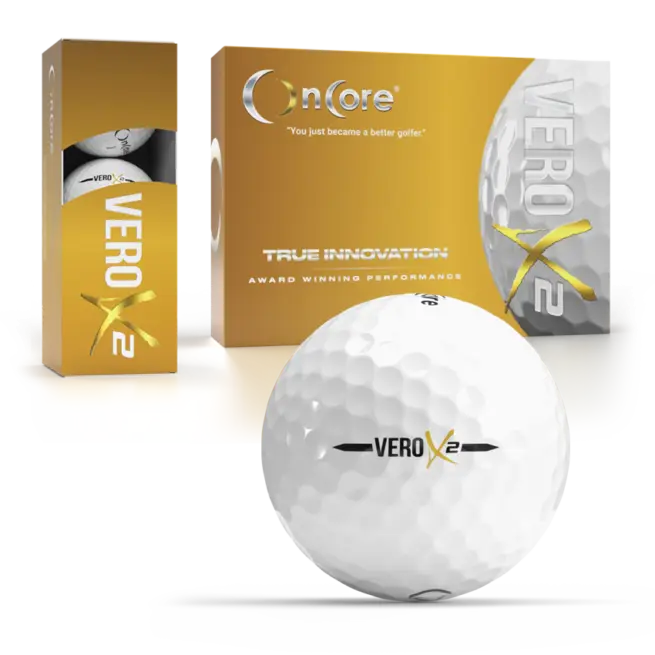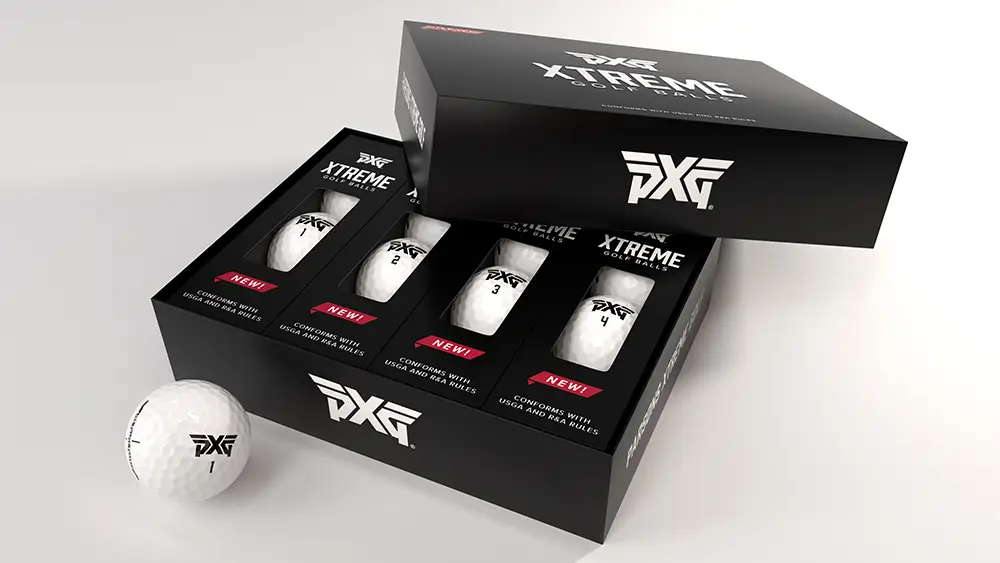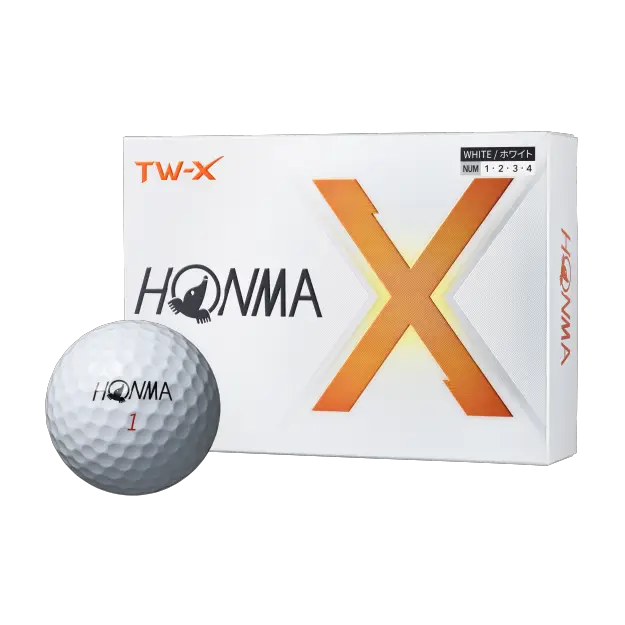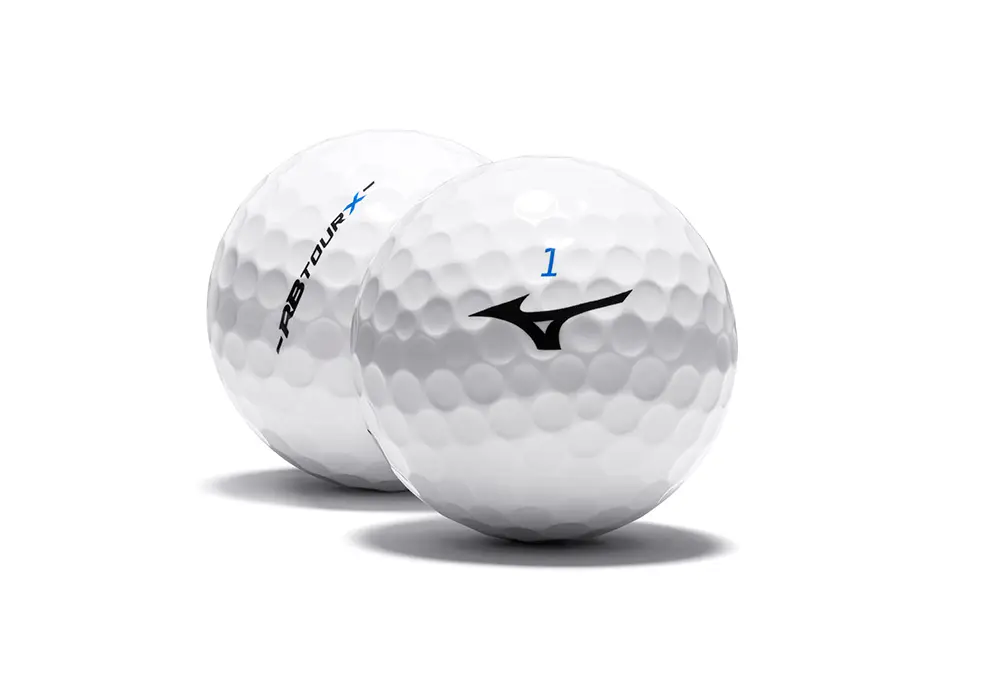Titleist, Callaway, and TaylorMade are the big three brands when it comes to golf balls, both on Tour and in the bags of amateur players of all ability levels. A couple other companies have also carved out a respectable share of the marketplace—we’re looking at you, Bridgestone and Srixon. Collectively, these are the brands that golfers most often play and trust when they’re setting their ball on the first tee, but they’re not the only options on store shelves.
A handful of lesser-known brands have recently come to market with balls that are being marketed as “Tour level” in terms of their quality and, more importantly, their performance. Are these balls legit? Do they live up to the expectations that those marketing campaigns have set? Are they worthy of your time and consideration? These are the questions that I set out to answer as I brought these balls to the course and into a simulator.
OnCore Vero X2
According to OnCore, the technology behind the brand’s Vero X2 golf ball promotes “distance-enhancing low driver spin.” The ball lived up to that claim in a TrackMan simulator, where my best drive spun an absurdly low 1,940 rpm. (Compare that to TrackMan’s average driver spin rate for a male amateur, which comes in at just below 2,900 rpm.) OnCore claims the ball also offers “supreme stopping power on greens with wedge shots.” This, too, was confirmed as full swings with a pitching wedge produced an average spin rate of 8,406 rpm. Out on the course, the ball felt and reacted similarly to the one I routinely play, which makes the Vero X2 a tempting purchase, especially considering their price tag of under $50 for a dozen. (BUY NOW)

Seed SD-01
You likely don’t know the Seed name, but this young Irish company, which was conceptualized in an Irish technological university seven years ago, deserves to be on your radar. Utilizing that school’s aerospace wind tunnel, Seed’s engineers fine-tuned their flagship ball’s in-flight characteristics and created the SD-01, a 3-piece ball designed to compete with other brands’ Tour-level offerings. (Seed has since launched two additional models.) Marketed to be a ball that’s “as good as anything out there, at a price anyone can afford,” the SD-01 ($35/dozen) delivers on that promise. It offered optimal spin rates in the simulator (especially on shots hit with longer clubs), while the distance and trajectory of each shot hit out on the course appeared to mirror those of my everyday ball. The fact that a dozen SD-01s cost $20 less than what I normally pay makes them all the more enticing. (BUY NOW)

PXG Xtreme Premium
Much like the disruptive brand’s lineup of golf clubs, the first generation of PXG’s Tour-level golf ball was designed with maximum distance in mind. Well-struck drives in the simulator registered spin rates that barely exceeded 2,000 rpm, which produced piercing tee shots with minimal lateral movement. The same was true for other longer clubs in the bag—flushed shots hit with a 19-degree hybrid, for example, spun at a rate comparable to most three woods. As I moved through the bag, however, I found that shots hit with more lofted clubs spun high enough to land softly on greens—performance that was supported by a round out on the course. If these balls have a downside, it’s their hard-feeling nature around the green. That doesn’t mean that I couldn’t hit the shots that I wanted to; it’s simply an acknowledgement that they don’t offer the same pleasing short-game feel as some of the industry’s more popular tour-level balls. (BUY NOW)

Honma TW-X
After playing Honma’s TW757 VX irons for almost two years, I can confidently say that the Japanese company builds high-quality equipment that performs consistently. The same seems true for the brand’s lineup of golf balls, albeit after a much more limited testing period. In particular, the TW-X is a high-compression ball intended to produce, in the company’s words, “maximum distance” and “high flight.” It would be disingenuous to say that the ball outperformed all others tested in terms of distance, but it did fly just as far. That said, drives hit with the TW-X did fly the highest; and while that means they also spun the most, it wasn’t an alarming spin rate (driver swings averaged just over 2,700 rpm). (BUY NOW)

Mizuno RB Tour X
Chances are, if you have any personal experience with Mizuno equipment, it involves the Japanese brand’s lineup of forged irons (though Mizuno has made some noteworthy strides in its metal woods department as of late). What you likely don’t know is that Mizuno has recently entered the Tour-level golf ball space. In particular, the brand is positioning its new RB Tour X as a “lower spinning” ball with a unique dimple pattern that “creates a high launch from the driver and a flatter flight from short irons.” Both of those statements are accurate—simulator testing proved that the RB Tour X consistently launched higher with the driver than every other ball, while 7-irons and pitching wedges produced shots that flew lower than the rest of the balls tested. Mizuno also claims that these balls “feel sensationally soft at impact,” and while that’s true, their softness shows up in undesirable ways on the course. More specifically, they’re prone to being scuffed and nicked up. At $43 per dozen, these new Mizuno balls may look like a bargain—especially given their performance capability—but factor in their durability concerns, and you may soon find yourself looking to fill your bag with a different Tour-level ball. (BUY NOW)

Have you tried any of these golf ball brands? Give us your feedback in the comment section.







Very interesting article as I am looking to change golf balls as after taxes we are paying close to $80.00 a dozen in Canada for the top line balls.
I have tried the Taylor Made “Speedsoft” and it performs as well as the ProV1X I normally play.
Good to know that there are some cheaper options out there!
Finding them in stores might be the challenge?
You are missing a great bargain if you don’t play the Maxfli Tour ball sold by Dicks and Golf Galaxy. Great tests results and a very durable ballast about $30 a dozen.
I am ok with the ProV1x but as a curiosity I tried the Seed 1. I could play this ball, and may have to while the 2025 Titleist balls are back ordered in yellow.
I’ve been playing Srixon model golf balls for about the last 3 years (gradually eliminating the Callaways, Top-of -the-line Titleists, and most of the Taylor-Mades, Bridgestones, and Wilson balls from my gear. Some because of price, others for more personal reasons. The Q-Star is excellent at It’s price point and the Z-Stars feel amazing. Last spring I grabbed a sleeve of Mizuno golf balls because of the quality behind the brand. These are a superior feeling golf ball, and unlike the article states, I’ve had ZERO issues with durability. My bag currently has only Mizuno and Srixon balls in there these days, because with these products, I can actually feel the ball on the clubface, and feel the release when they launch.
I get the question all of the time “does the ball really matter”? And while most of the known brands are pretty much tied for 1st place because of the restrictions on how a ball can perform there are, within the brands, some performance characteristics like spin rates and feel. I play the OnCore VeroX2. It performs just as well as any of the major brands…but I especially like it on and around the green.